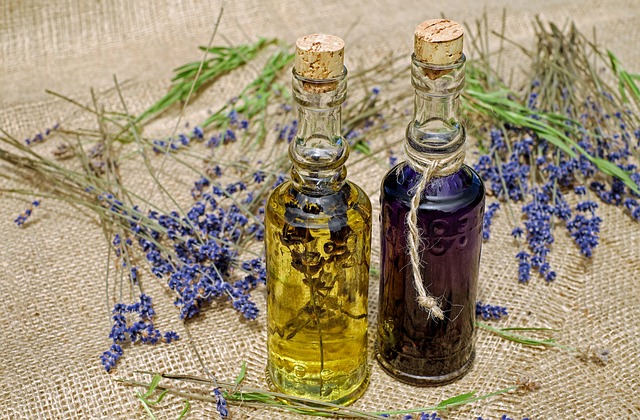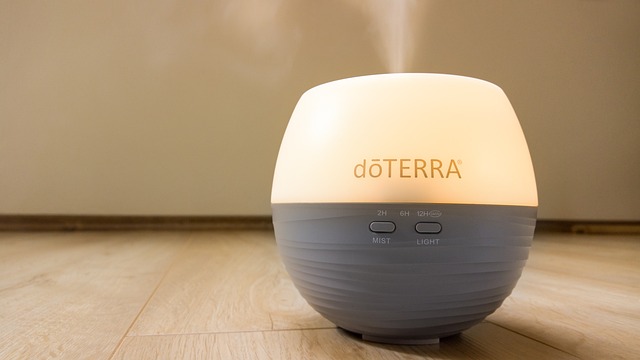Anti-inflammatory therapies within regenerative medicine are transforming the treatment landscape for inflammatory conditions. Stem cell and PRP therapies stand out for their ability to harness the body's natural healing processes, with stem cells differentiating into healthy cells and secreting anti-inflammatory cytokines, while PRP therapy uses a patient's concentrated platelets to release growth factors that promote tissue repair. Peptide therapy complements these treatments by specifically targeting immune function to reduce inflammation, offering a personalized approach to healing without significant side effects. This holistic inflammation management strategy is bolstered by a diet rich in anti-inflammatory nutrients and advanced pain relief treatments, which collectively ensure optimized care for patients with chronic inflammation, enhancing overall wellness. The integration of these therapies offers innovative solutions that target the root cause of inflammatory conditions, aiming to improve outcomes beyond traditional interventions through regenerative medicine for inflammation.
Exploring the synergistic potential of nutrition and cutting-edge therapies, this article delves into the multifaceted approach to harnessing anti-inflammatory benefits. We’ll examine the integration of stem cell therapy for inflammation, PRP therapy for inflammation, and peptide therapy for inflammation alongside advanced pain relief treatments and holistic inflammation management strategies. Through regenerative medicine for inflammation, readers will uncover innovative treatments that promise to revolutionize care for those suffering from chronic inflammatory conditions. This comprehensive guide provides insights into how combining these therapies can significantly enhance the body’s natural healing processes and offer relief beyond traditional methods.
- Harnessing Nutrition and Advanced Therapies for Effective Anti-Inflammatory Benefits
- Exploring Stem Cell Therapy: A Natural Approach to Combating Inflammation
- The Role of PRP Therapy in Inflammation Reduction and Pain Relief
- Peptide Therapy: Unlocking Potential for Anti-Inflammatory Healing
Harnessing Nutrition and Advanced Therapies for Effective Anti-Inflammatory Benefits

Integrating nutrition with cutting-edge therapies offers a potent approach to managing inflammation. For instance, stem cell therapy for inflammation harnesses the restorative potential of stem cells to repair and regenerate damaged tissues, thereby reducing inflammatory responses. Similarly, platelet-rich plasma (PRP) therapy for inflammation utilizes a concentration of a patient’s own platelets to accelerate healing and alleviate symptoms by stimulating tissue repair and inflammation reduction. Additionally, peptide therapy for inflammation employs specific protein chains that can modulate the immune system, offering another layer of anti-inflammatory action. Incorporating these advanced therapies with a diet rich in anti-inflammatory nutrients like omega-3 fatty acids, antioxidants, and polyphenols enhances their efficacy. This holistic inflammation management strategy ensures that patients receive comprehensive care, optimizing their body’s natural defenses against chronic inflammation and promoting overall wellness. Advanced pain relief treatments within regenerative medicine for inflammation further contribute to this synergistic approach, offering novel solutions that go beyond traditional methods to address the underlying causes of inflammatory conditions effectively.
Exploring Stem Cell Therapy: A Natural Approach to Combating Inflammation

Stem cell therapy has emerged as a promising anti-inflammatory therapy within the realm of regenerative medicine, offering a natural approach to combating inflammation. This innovative treatment harnesses the body’s own restorative capabilities by introducing stem cells that differentiate into healthy cells, potentially repairing damaged tissue and reducing inflammation at its source. The anti-inflammatory effects of stem cell therapy are not only due to their direct regenerative properties but also because they secrete anti-inflammatory cytokines, which modulate the immune response and alleviate the underlying causes of inflammation.
In parallel with stem cell therapy, platelet-rich plasma (PRP) therapy is another advanced treatment in the arsenal of anti-inflammatory therapies. PRP therapy utilizes a concentrate of a patient’s own platelets to accelerate healing and regeneration, especially in musculoskeletal conditions. The high concentration of growth factors in PRP promotes tissue repair and has been found to be effective in managing inflammation by reducing the production of pro-inflammatory cytokines while enhancing anti-inflammatory responses. Furthermore, peptide therapy for inflammation complements these treatments by introducing specific amino acid sequences that can modulate immune function and reduce inflammation. This holistic inflammation management approach is part of a broader shift towards advanced pain relief treatments that aim to address the root cause of inflammatory conditions, rather than merely masking their symptoms.
The Role of PRP Therapy in Inflammation Reduction and Pain Relief

PRP therapy, a cornerstone in advanced pain relief treatments, harnesses the body’s own healing potential to address inflammation and promote tissue repair. In this regenerative medicine approach, a patient’s blood is processed to isolate platelets rich in growth factors. These platelets are then re-injected into the injured or affected area, stimulating cellular repair and reducing inflammation. Clinical studies have demonstrated that PRP therapy can effectively mitigate symptoms associated with inflammatory conditions, offering a minimally invasive alternative to traditional treatments.
Stem cell therapy for inflammation represents another frontier in holistic inflammation management. This innovative therapy utilizes stem cells capable of differentiating into various cell types, potentially repairing or replacing damaged tissues. By modulating the immune response and secretion of anti-inflammatory cytokines, stem cell therapy can alleviate pain and inflammation, offering a path to recovery for conditions where other treatments have failed. The synergy between PRP therapy and stem cell therapy is being explored to enhance the anti-inflammatory benefits and accelerate healing. Peptide therapy for inflammation further complements these strategies by targeting specific inflammatory pathways with precision, ensuring a tailored approach to each patient’s unique needs. Together, these therapies are part of a broader paradigm in anti-inflammatory therapies that emphasizes personalized and integrative care for optimal outcomes.
Peptide Therapy: Unlocking Potential for Anti-Inflammatory Healing

Peptide therapy is emerging as a promising avenue in the realm of anti-inflammatory therapies, offering a targeted approach to healing and recovery. These peptides, which are naturally occurring amino acid chains, can modulate the immune response and reduce inflammation at a cellular level. By selectively binding to specific inflammatory cytokines, peptide therapy has shown potential in mitigating the body’s overactive immune responses without the systemic side effects often associated with traditional medications. This precise mechanism makes it an attractive option for individuals seeking advanced pain relief treatments that align with holistic inflammation management strategies.
Stem cell and PRP (platelet-rich plasma) therapies are also at the forefront of regenerative medicine for inflammation, providing innovative solutions for chronic inflammatory conditions. Stem cells possess the unique ability to differentiate into various cell types, potentially repairing or replacing damaged tissues and promoting natural healing. PRP therapy harnesses a patient’s own blood components to accelerate tissue recovery by stimulating collagen production and promoting an anti-inflammatory environment conducive to healing. Together with peptide therapy, these treatments form part of an integrated approach to managing inflammation, offering hope for those suffering from conditions that have been resistant to conventional treatment methods.
In conclusion, the integration of nutrition and cutting-edge therapies presents a promising frontier in managing inflammation through anti-inflammatory therapies. The potential of stem cell therapy for inflammation, alongside PRP therapy for inflammation, underscores a paradigm shift towards holistic inflammation management. Peptide therapy for inflammation further expands this landscape, offering innovative solutions in the realm of regenerative medicine for inflammation. Collectively, these approaches pave the way for advanced pain relief treatments, enhancing our ability to alleviate discomfort and restore well-being. As we continue to explore and refine these methods, the synergy between nutritional interventions and therapeutic advancements holds significant promise for those seeking effective management of inflammatory conditions.
